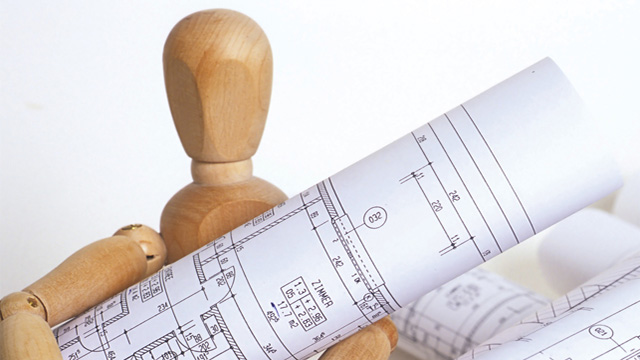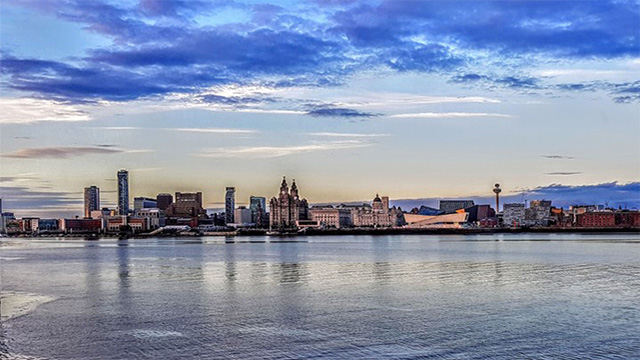It’s not often that whales come up in a conversation about the built environment, but it seems that increasingly they should. Why? Because how we build, where we source our materials and how we get those products to us affects them. And whales, it turns out, are massive sequesters of carbon.
Over their long lives they accumulate on average some 33 tonnes of CO2 – 1,000 times more than a single tree. When they die, they sink to the bottom of the ocean, taking that carbon out of the atmosphere for centuries. But our failure to really focus on Scope 3 emissions and to properly manage our supply chains is disrupting the whale population and ultimately stopping real estate from playing its part in solving the climate crisis.
It was this need to think deeper about supply chains, unintended consequences and how we track and manage impact that formed the basis of an EG-led conversation at Footprint+ in Brighton earlier this month.
The panel
- Jeff Blaylock, senior consultant, Deepki
- Clodagh Cant, senior sustainability consultant, Longevity Partners
- Kate Larsen, founding director, SupplyESChange
“If we take stone, if we take minerals, many people will know that those materials are often associated with modern slavery or human rights risks,” said Kate Larsen, director of ESG at SupplyESChange. “But there is also mining, which has a big climate impact and [leads to the] destruction of natural biodiversity, we are also shipping a long distance and, increasingly, we are starting to factor in that it has a climate impact not only in the emissions of the ship that travelled around the world, but also there are other factors.
She added: “We are now learning whales sequester carbon and the more ships that are disrupting their habitat across the world, the more we are disrupting the ability for carbon to be sequestered and kept out of the atmosphere.”
It is a big concept to get your head around: when thinking about the materials you want to use to build your net-zero building, you need to think about whales. It is a tough ask and that’s why, said Longevity Partners’ senior sustainability consultant Clodagh Cant, some companies are just burying their heads when it comes to Scope 3 emissions.
Dubious data
“There are lots of studies out there that show of the top 200 real estate companies, just under half are completely neglecting those Scope 3 emissions and not even bothering to account for them,” said Cant.
“The other half are accounting for them, but it’s very dubious. The data sets are not complete in any shape or form. And of those that are measuring and reporting, only about 10% of them are making some kind of pledge to reduce those emissions. That sounds crazy, but the really crazy thing is that typically those Scope 3 emissions account for more than 85% of the average real estate company’s total emissions.”
And this is where data comes in as a potential solution, said Deepki senior consultant Jeff Blaylock. But it has got to be reliable. That reliability may not be there now – for Scope 3 – at least, but he believes that investors will soon start demanding it.
For Larsen, the demand is already there. She cited EU legislation, including the corporate sustainability reporting directive as an example. The CSRD requires that companies become more detailed in their sustainability reporting, providing more qualitative and quantitative data on science-based targets, social matters, human rights and diversity. And while the UK may not be in the EU, UK businesses will be forced to adopt the directive if they have any sort of investors or other relationship within it.
“The EU has passed two directives now on supply chain due diligence. One more focused on sustainability, the other more on human rights, but a lot of overlap,” said Larsen. “And there is a third one coming against imports of any goods made under forced labour and there’s quite often a link – be it for solar panels, timber, stone, minerals, etc – to forced labour and environmental issues. So the legislation is there. It’s not quite at the stage in the UK, but many other countries have been passing it and that’s the direction of travel.”
Risk works
Deepki’s Blaylock said the real way to get real estate to think about and monitor Scope 3 emissions properly is to link it to risk.
“Until we start seeing a level of reporting requirements and a level of accountability that creates risk for different stakeholders, that will be the only time we start to see some real change,” he said.
“You’re starting to see that within the other scopes. Scopes 1 and 2 are coming up more prominently. But once we see those conversations move into Scope 3, the supply chain really needs to be ready to activate that, to have that transparency so we can really pull that into the decision-making process.”
If you really care about these issues, you need to be the voice for the legislation we need
And that’s where real estate has a really big opportunity to be an exemplar. But it needs to start stepping up, standing out and working together to make a difference, said Larsen.
“Do you know what caused those laws to pass that create the accountability that awakens people to the risk?” she asked. “It was companies putting their name forward, getting together with the trade union world and the NGO world and pushing publicly for the legislation. And it’s not built environment companies, it’s Adidas and ASOS. Where are you guys? If you really care about these issues, you need to be the voice for the legislation we need.”
She added that if real estate doesn’t step up soon it will lose out. She cited retail giants such as Burberry and Charlotte Tilbury, which are now asking a slew of questions about how their physical spaces are built, what materials are used and how they are sourced.
“It is really risky to be building buildings that don’t have that eco-design, that haven’t had that ethical or responsible sourcing built in or are at risk of modern slavery of workers,” said Larsen. “A real risk to a real estate developer in the UK is to not be the venue of choice in the next few years, as those retailers don’t only talk about it, but they really dig in and apply their risks and responsible sourcing standards.”
Longevity’s Cant says work around Scope 3 doesn’t have to be perfect, but there does need to be action.
“It’s more about doing something and something that is really effective, because we really need change,” she said. “We’ve gone past the point of saying and hoping we’ll get there eventually.”
For Blaylock, it is about being “conscious that you can iterate” and improve on that purposeful action you have taken.
And for SupplyESChange’s Larsen it is about doing it together to build a wider understanding of the impacts the industry can have and how – probably with legislation – it can make it better.
And while trying to tie the “whale conveyor belt” (see IMF’s Nature’s Solution to Climate Change for more details) into your net-zero pathway may feel like a strange place to start, it could just be the talking point needed to start doing something.
To send feedback, e-mail samantha.mcclary@eg.co.uk or tweet @samanthamcclary or @EGPropertyNews











